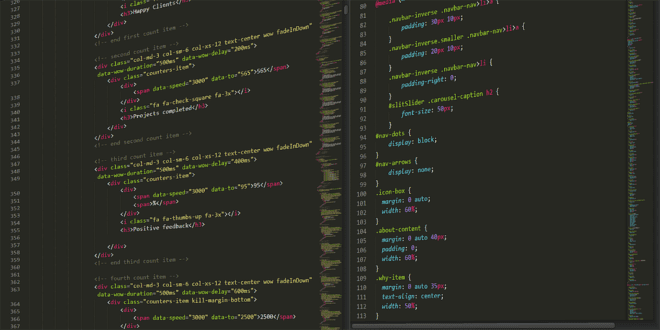The Importance of CSS in Modern Web Design
CSS or Cascading Style Sheets is the ultimate styling language for modern web design. CSS is used to define the look and layout of web pages, including colors, fonts, and formatting. CSS plays a crucial role in ensuring that websites are visually appealing, user-friendly, and intuitive. In this article, we will explore why CSS is vital for modern web design and how it can be leveraged to create beautiful and efficient websites.
Streamlined Website Development with CSS
Prior to CSS, web designers tediously coded each page using HTML, which meant styling elements one by one within the HTML code. CSS provided a welcome relief from this, as it allows for the separation of content structure and styling. Website development using CSS is faster and requires less code than traditional HTML design, ultimately allowing developers to focus on elements essential to good User Interface Design (UID) and information architecture.
Cross-Device CSS Framework
Modern websites must be visually appealing across multiple devices, from large desktops to tiny mobile phones. CSS is scalable to any device, so rather than writing separate code for each page design or borrowing code snippets, developers can create CSS scripts that adjust based on the dimensions available on the screen. With this feature, it is easier to make websites more attractive and function correctly in every browsing situation.
Optimizing Website Speed and Performance
Without CSS, website pages must be written in HTML explicitly. Loading large amounts of code every time a user visits a page requires longer loading times. The difficulty arises when businesses wish to optimize their website speed and performance for search engine traffic and mobile performance. With optimal CSS strategies, it can speed up page-loading times by employing simple techniques like file management, using minimal code snippets, and setting a precedence strategy for code deduplication.
Increased Separation between Structure and Design Elements
An essential feature of CSS is a clear sense of separation between page structure and design elements. By coding in this individualized category, the development strategy is then faster and more componentized. It is possible to implement patterns and reusable templates across many pages. As a result, there will be more time spared by editing and modifying content logically.
Conclusion:
In conclusion, modern web designers depend upon the many advantages of CSS to create visually stunning pages that smoothly integrate scrolling, interactions, animation, features like buttons, dropdown menus or images, while delivering quick speed and efficient load times. With the many advanced technical benefits that CSS can provide, we now have everything we need to take website design to its full potential!
 Mind Uncharted Explore. Discover. Learn.
Mind Uncharted Explore. Discover. Learn.




